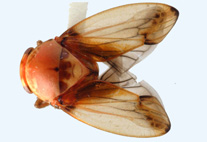Abstract
A new species of Sphaerodoridium Lützen, 1961 (Polychaeta: Sphaerodoridae) collected off Iceland during the BIOICE programme is described. Sphaerodoridium guerritai sp. nov. is mostly present in waters around the northern half of Iceland, and seems to be common in soft bottoms at depths of 49–1253 m. It is mainly characterized by having macrotubercles which are provided with a long stalk which bears 1–3 small papillae; this seems an unique feature in Sphaerodoridium and the closely related genus Clavodorum Hartman and Fauchald, 1971. Furthermore, the new species is also characterized by having one transversal row of 11–12 dorsal macrotubercles per chaetiger in midbody; 10–16 spherical papillae in front of each row of macrotubercles, somewhat arranged in a dorsal zig-zag; 10–18 ventral papillae per chaetiger arranged following a non-random pattern: two transversal rows on parapodial areas and one on interparapodial area, of usually 4, 6 and 5 papillae respectively. Short paired tubular structures with distal opening were found on the ventrum of most chaetigers and are interpreted as nephridial papillae and nephridiopores, respectively. Females show special ventral structures between chaetigers 9–10 which may represent genital openings as suggested for other sphaerodorids; males do not show any apparent copulatory structures. A comprehensive table comparing some diagnostic features regarding macrotubercles and body papillae of all known species of Sphaerodoridium and Clavodorum is provided.

